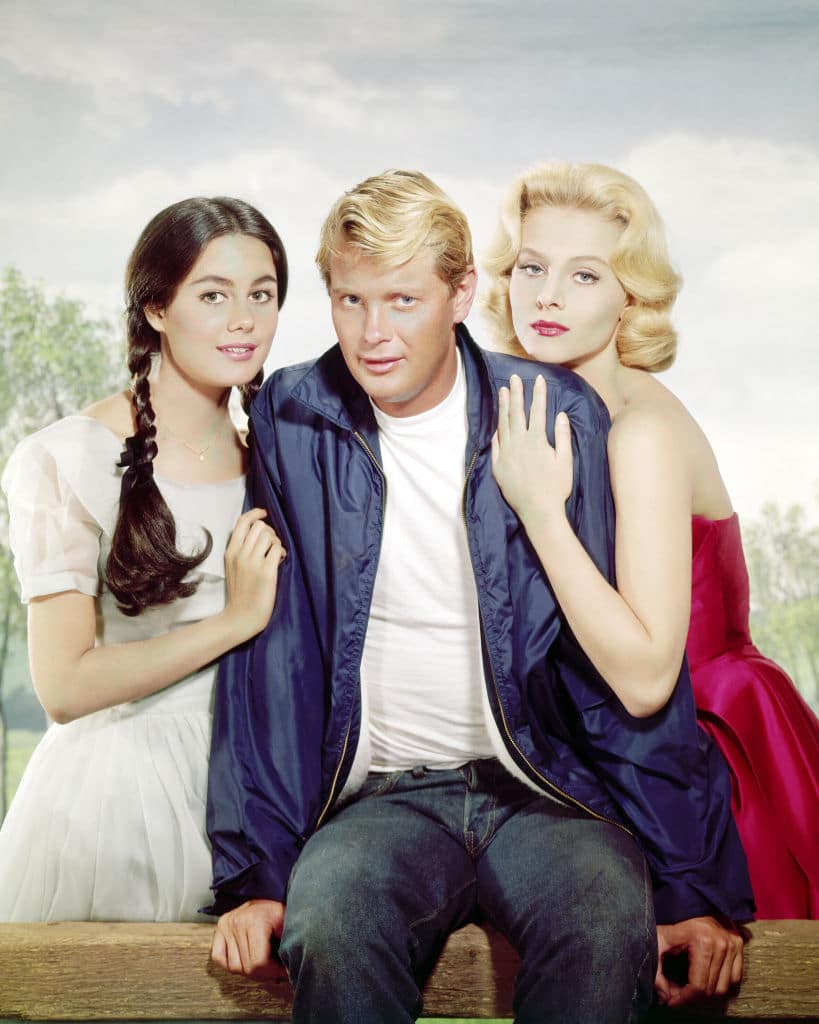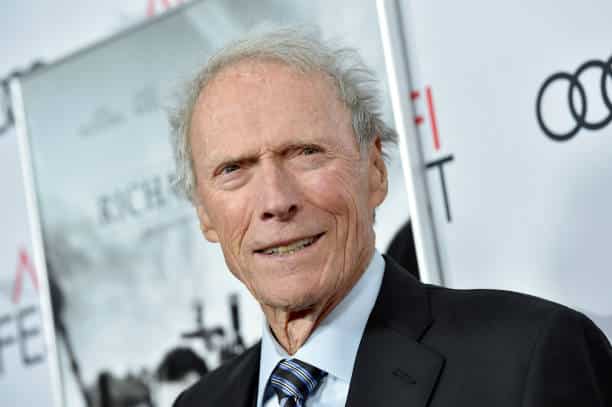Troy Donahue was a well-known figure in entertainment during the 1950s and 1960s, captivating audiences with his striking appearance and charm. While his on-screen success gave him widespread recognition, the burdens of fame and personal struggles shadowed much of his life. His story is one of soaring highs and devastating lows, ultimately marked by redemption and personal discovery in his later years.
Donahue was born as Merle Johnson in New York City, raised in an environment steeped in the arts. His mother, a stage actress, introduced him to the world of theater at an early age, and these experiences nurtured his passion for acting. He often recounted memories of sitting alongside Broadway legends, such as Gertrude Lawrence, which fueled his dream of becoming a performer. Although he initially pursued journalism at Columbia University, Donahue’s heart was always drawn toward the stage and screen. Soon, his ambition led him to adopt the name Troy Donahue, a decision influenced by his agent and Hollywood executives aiming to craft a marketable star persona.
He made his first appearance on film in Man Afraid and soon signed with Warner Bros. in 1959. The movie studio saw promise in his clean-cut looks and likable demeanor, casting him in romantic and dramatic roles. His big break came that same year with A Summer Place, a film that cemented his status as a teenage idol. With his golden hair, blue eyes, and all-American appeal, Donahue became a favorite of young audiences, often cast opposite glamorous leading ladies like Sandra Dee. He quickly became synonymous with the wholesome heartthrob image Hollywood cultivated during that era.
However, the glamour of Donahue’s rising fame masked personal challenges. Behind the bright lights, the actor struggled with financial instability. He lived extravagantly, maintaining the lifestyle of a Hollywood star, even though his earnings didn’t align with the image he projected. As Donahue later admitted, he was spending far beyond his means, leading to mounting debts and stress. “I was living like a movie star, but not being paid like one,” he confessed, reflecting on how fame had brought fleeting success without long-term stability.
Romance was another tumultuous aspect of Donahue’s life. Over the years, he married four times, each relationship ending in divorce. His first marriage to actress Suzanne Pleshette lasted only a few months. His subsequent unions with Valerie Allen, Alma Sharpe, and Vicky Taylor were similarly short-lived. These failed relationships left him emotionally drained, contributing to the downward spiral that followed. As the pressures of his career and personal life mounted, Donahue turned to alcohol and drugs to cope, a decision that would haunt him for decades.
By the end of the 1960s, his once-promising career began to falter. Hollywood had little use for his brand of clean-cut beauty as the industry shifted toward grittier, more complex storytelling. Struggling to find meaningful roles, Donahue sank deeper into substance abuse. He later admitted that he was rarely sober during this period. His mornings began with a dangerous cocktail of aspirin, codeine, vodka, and cocaine. However, he maintained that he was always professional on set, insisting that his addictions never interfered with his work.
As his career declined, Donahue’s personal life unraveled further. There were times when he found himself homeless, living in Central Park and storing his belongings in a backpack. His descent into addiction and homelessness was a stark contrast to the glamorous image that had once defined him. After his fourth marriage ended, Donahue reached a turning point. Recognizing that he could no longer continue down the same path, he sought help and entered recovery in 1982. Reflecting on his sobriety, Donahue described it as a daily battle but one that he was determined to win. “The obsession to not drink has become as big as the obsession to drink,” he said, grateful for the chance to rebuild his life.
One of the most transformative moments of Donahue’s life came when an unexpected encounter reconnected him with his past. While visiting Los Angeles, he crossed paths with a former lover who introduced him to a 13-year-old boy named Sean. To Donahue’s astonishment, the woman revealed that Sean was his son. Although surprised, the actor immediately recognized himself in the boy, both in appearance and spirit. Without hesitation, Donahue embraced his role as a father, building a meaningful relationship with Sean despite the lost years. Sean’s mother never sought financial support from Donahue, allowing the two to develop their bond naturally.
Donahue’s later years were marked by a quieter existence, far from the spotlight that had once defined him. He accepted that his days as a leading man were over, choosing instead to embrace the roles that came his way, regardless of their size or significance. He appeared in lower-budget films like Cry-Baby, Bad Blood, and Assault of the Party Nerds, enjoying the work without the pressure of chasing stardom. For Donahue, this phase of his life was about acceptance and peace.
By the late 1990s, Donahue seemed content with the person he had become. In interviews, he expressed gratitude for his second chance at life and the opportunity to reconnect with his son. Although the glamour of his youth had faded, Donahue found fulfillment in sobriety, fatherhood, and the small joys of everyday life.
Tragically, his life came to an end on September 2, 2001, when he suffered a fatal heart attack at the age of 65. In the years since his passing, fans have continued to remember him fondly, not only for his good looks and charming screen presence but also for his resilience in the face of adversity. Donahue’s story serves as a poignant reminder that even the brightest stars can face darkness—and that redemption is always possible, no matter how far one falls.
Though he is no longer with us, Troy Donahue’s legacy endures through his films and the memories of those who admired him. His life was a blend of beauty and struggle, triumph and hardship, but ultimately, it was defined by his ability to rise above his challenges and find peace. Those who remember him do so not only for his handsome face but for the strength he showed in the face of life’s many trials. His story is one of hope—a testament to the idea that it is never too late to rewrite your narrative and embrace the future, no matter what the past may hold.
PROC. BY MOVIES


 Entertainment1 year ago
Entertainment1 year ago
 Entertainment1 year ago
Entertainment1 year ago
 Entertainment1 year ago
Entertainment1 year ago
 Entertainment1 year ago
Entertainment1 year ago
 Entertainment1 year ago
Entertainment1 year ago
 Entertainment1 year ago
Entertainment1 year ago
 Entertainment1 year ago
Entertainment1 year ago
 Entertainment1 year ago
Entertainment1 year ago








